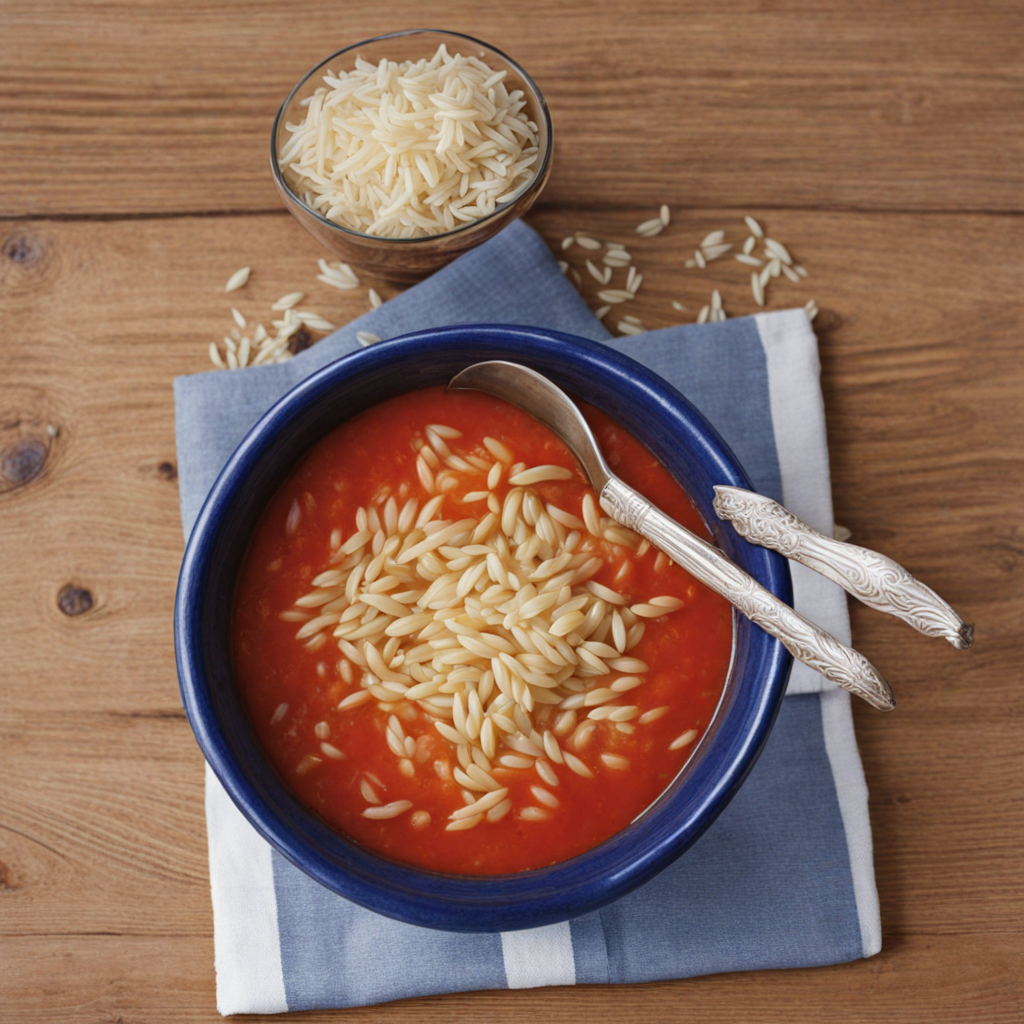Tyropita
Tyropita is a delightful Greek pastry that showcases the rich and diverse flavors of traditional Greek cuisine. This savory pie is primarily made from layers of flaky phyllo dough, which is known for its delicate, crispy texture that envelops a creamy filling. The filling is typically a delectable mixture of feta cheese and sometimes ricotta or other local cheeses, combined with eggs and fresh herbs like dill or parsley. The result is a harmonious balance of flavors that perfectly captures the essence of Greek cooking, offering a satisfying bite with each flaky layer. What makes Tyropita particularly appealing is its versatility. It can be enjoyed as a snack, appetizer, or even a light meal, making it a popular choice in Greek households and tavernas alike. The golden, crispy exterior gives way to a warm, cheesy interior that is both comforting and indulgent. Whether served hot from the oven or at room temperature, Tyropita remains a beloved staple that brings people together, often accompanied by a side of Greek yogurt or a fresh salad for a complete experience. As you take your first bite of Tyropita, the contrast between the crunchy pastry and the soft, savory filling is truly a revelation. The rich, tangy feta cheese creates a delightful umami flavor, while the herbs impart a fresh, aromatic quality that elevates the dish. With its origins steeped in Greek tradition, Tyropita not only offers a taste of Greece but also invites you to explore the cultural significance behind this beloved pastry, making it an essential culinary experience for anyone looking to broaden their palate.
How It Became This Dish
The Enchanting History of Τυρόπιτα: Greece’s Beloved Cheese Pie Introduction to Τυρόπιτα Τυρόπιτα, a traditional Greek cheese pie, is a culinary gem that embodies the rich tapestry of Greek culture and history. With its flaky pastry, savory cheese filling, and delightful aroma, this dish is not just a staple of Greek cuisine, but also a symbol of the country’s agricultural heritage, regional diversity, and communal spirit. To fully appreciate the essence of Τυρόπιτα, we must delve into its origins, cultural significance, and evolution through the ages. Origins of Τυρόπιτα The roots of Τυρόπιτα can be traced back to ancient Greece, where the combination of flour and cheese was likely first embraced. Historical texts, including those of the ancient philosopher and writer Athenaeus, mention various cheese-based dishes, indicating that Greeks have enjoyed cheese in various forms for millennia. The ancient Greeks made various cheeses from goat and sheep milk, which were staples of their diet. The word "πίτα" (pita), meaning "pie" or "flatbread," is derived from the Greek word for "flat." This indicates that the concept of a filled pastry has deep historical roots in the region. Over time, the influence of Byzantine, Ottoman, and regional cooking traditions enriched the evolution of Τυρόπιτα. Cultural Significance Τυρόπιτα is more than just a dish; it holds a special place in Greek culture. It is commonly served in households, bakeries, and tavernas across Greece, making it a beloved comfort food that evokes feelings of nostalgia and familial warmth. Traditionally, Τυρόπιτα is made with a variety of cheeses, most notably feta, which adds a salty and tangy flavor to the filling. Other cheeses such as graviera, kasseri, and ricotta may also be used, depending on regional preferences and availability. In Greece, food is often tied to celebration and community, and Τυρόπιτα is no exception. It is a common feature at festive occasions, family gatherings, and religious celebrations. For example, it is popular during Greek Orthodox Easter, where families come together to share meals. The act of preparing and sharing Τυρόπιτα can be seen as a ritual that reinforces bonds among family members and friends. Regional Variations and Development As with many traditional foods, the preparation of Τυρόπιτα varies significantly across different regions of Greece, reflecting local ingredients, tastes, and culinary techniques. - Macedonia: In northern Greece, the version of Τυρόπιτα often includes a thicker, more robust crust made from homemade phyllo dough, layered with a rich filling of feta cheese, eggs, and sometimes herbs like dill or mint. - Crete: In Crete, the cheese pie may incorporate local cheeses like "graviera" and is often enriched with a hint of orange zest or a splash of olive oil. The Cretan version can also be made in a round shape, resembling a tart, and is often served with a drizzle of honey. - Peloponnese: Peloponnesian Τυρόπιτα might include a blend of cheeses and is sometimes topped with sesame seeds before baking. This adds a nutty flavor and a delightful crunch to the pie. - Island Variations: On the Aegean islands, the use of local herbs and spices can drastically alter the flavor profile. For instance, some islands may add a touch of cinnamon or nutmeg to the cheese filling, creating a unique taste that speaks to the island's culinary identity. In urban areas, especially in Athens and Thessaloniki, you’ll find modern interpretations of Τυρόπιτα in gourmet restaurants, where chefs experiment with flavors and presentation. These contemporary versions may incorporate ingredients like sun-dried tomatoes, olives, or even truffle oil, showcasing the adaptability of this classic dish. The Role of Τυρόπιτα in Modern Greek Cuisine In recent years, there has been a resurgence of interest in traditional Greek foods, with Τυρόπιτα at the forefront. The global fascination with Greek cuisine has led to its recognition outside of Greece, where it is now celebrated in restaurants and food festivals. The emphasis on local, seasonal ingredients has also revitalized traditional recipes, encouraging chefs to source artisanal cheeses and organic produce to create authentic versions of Τυρόπιτα. Moreover, the rise of the "farm-to-table" movement has increased awareness of the importance of sustainability in food production. Many Greek chefs are now committed to preserving traditional practices while ensuring that the ingredients they use are ethically sourced. This focus on sustainability resonates with the values of the Greek people, who have long been attuned to the rhythms of nature and the importance of local agriculture. Conclusion: A Culinary Heritage Τυρόπιτα is more than just a delicious cheese pie; it is a dish steeped in history and cultural significance. From its ancient origins to its place in modern Greek cuisine, it represents the continuity and evolution of culinary traditions in Greece. Each bite tells a story of the land, the people, and the communal spirit that defines Greek life. As Greece continues to embrace its rich culinary heritage while adapting to contemporary tastes, Τυρόπιτα remains a beloved symbol of national pride. Whether enjoyed at a bustling taverna, a family gathering, or a gourmet restaurant, Τυρόπιτα serves as a delicious reminder of the history and culture that it represents—a culinary treasure that connects generations and celebrates the beauty of Greek cuisine.
You may like
Discover local flavors from Greece







